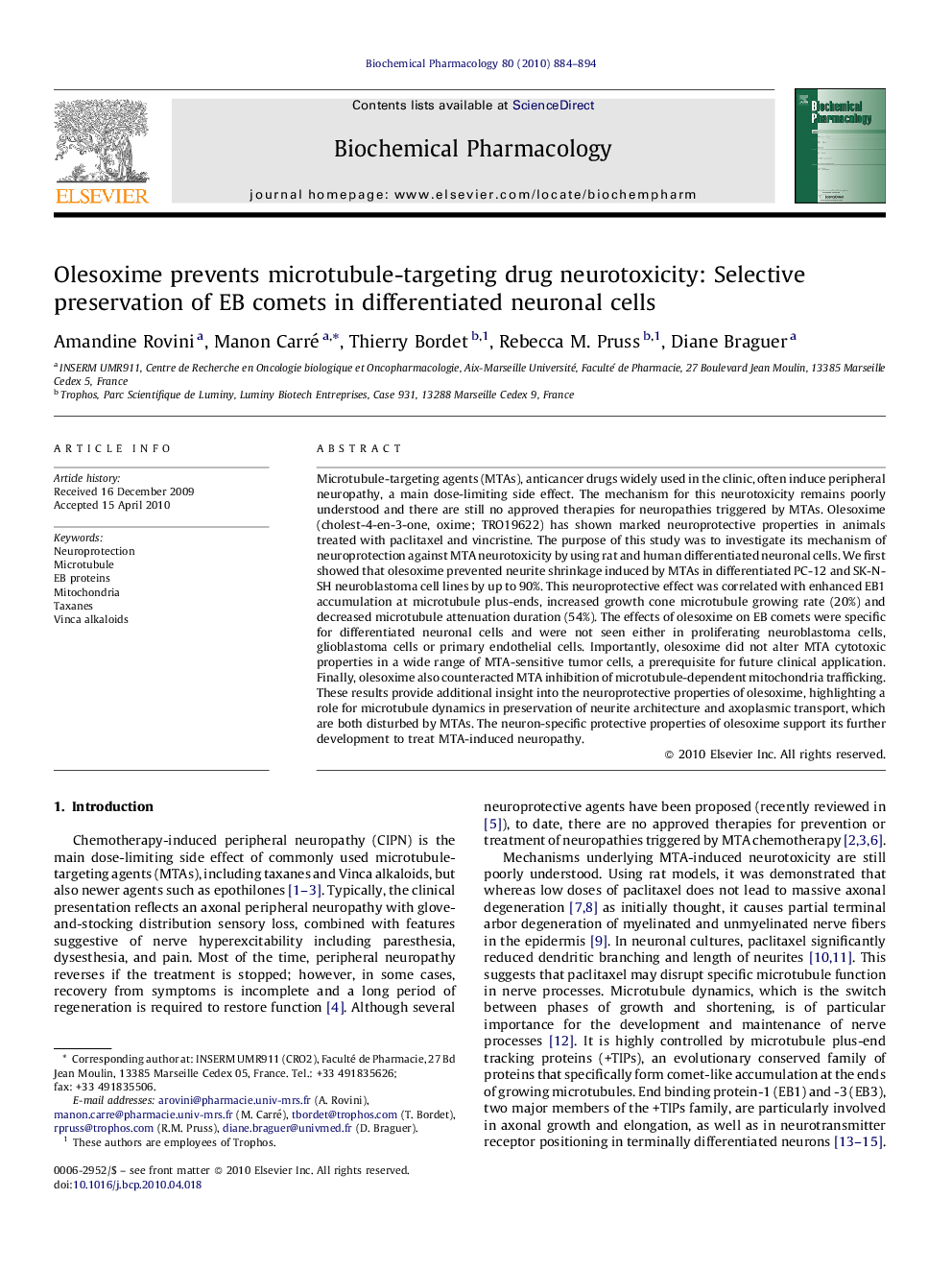| Article ID | Journal | Published Year | Pages | File Type |
|---|---|---|---|---|
| 2514375 | Biochemical Pharmacology | 2010 | 11 Pages |
Microtubule-targeting agents (MTAs), anticancer drugs widely used in the clinic, often induce peripheral neuropathy, a main dose-limiting side effect. The mechanism for this neurotoxicity remains poorly understood and there are still no approved therapies for neuropathies triggered by MTAs. Olesoxime (cholest-4-en-3-one, oxime; TRO19622) has shown marked neuroprotective properties in animals treated with paclitaxel and vincristine. The purpose of this study was to investigate its mechanism of neuroprotection against MTA neurotoxicity by using rat and human differentiated neuronal cells. We first showed that olesoxime prevented neurite shrinkage induced by MTAs in differentiated PC-12 and SK-N-SH neuroblastoma cell lines by up to 90%. This neuroprotective effect was correlated with enhanced EB1 accumulation at microtubule plus-ends, increased growth cone microtubule growing rate (20%) and decreased microtubule attenuation duration (54%). The effects of olesoxime on EB comets were specific for differentiated neuronal cells and were not seen either in proliferating neuroblastoma cells, glioblastoma cells or primary endothelial cells. Importantly, olesoxime did not alter MTA cytotoxic properties in a wide range of MTA-sensitive tumor cells, a prerequisite for future clinical application. Finally, olesoxime also counteracted MTA inhibition of microtubule-dependent mitochondria trafficking. These results provide additional insight into the neuroprotective properties of olesoxime, highlighting a role for microtubule dynamics in preservation of neurite architecture and axoplasmic transport, which are both disturbed by MTAs. The neuron-specific protective properties of olesoxime support its further development to treat MTA-induced neuropathy.
Graphical abstractMechanism of olesoxime neuroprotection against microtubule-targeting agents (MTAs)-induced damages in human and rat neuron-like cells.Figure optionsDownload full-size imageDownload as PowerPoint slide
